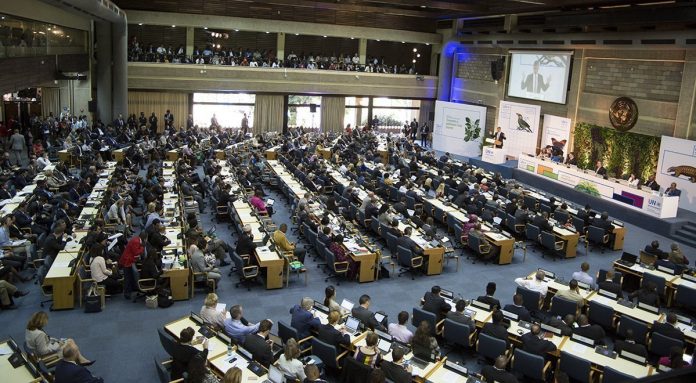In a significant first, India piloted resolutions on two important global environment issues relating to single-use plastics and sustainable nitrogen management at the fourth session of the United Nations Environment Assembly (UNEA), held in Nairobi from 11 to 15 March 2019. UNEA adopted both the resolutions with consensus. The theme of the UNEA this year was ‘Innovative solutions for environmental challenges and sustainable production and consumption’.
The global nitrogen use efficiency is low, resulting in pollution by reactive nitrogen, which threatens human health, eco system services, and contributes to climate change and stratospheric ozone depletion. Only a small proportion of the plastics produced globally is recycled with most of it damaging the environment and aquatic bio-diversity. Both of these are global challenges and the resolutions piloted by India at the UNEA are vital towards addressing these issues and attracting focus of the global community.
India also hosted, in the High-Level Segment of UNEA, a session on ‘Global Partnerships: Key to Unlocking Resource Efficiency and Inclusive Green Economies’. The side event was attended by representatives of member states, civil society organizations, and private sector organizations including leading financial institutions. The side event had a panel discussion which had a high level diplomatic participation from Germany, Brazil, South Africa and senior management of international financial institutions. The mainstreaming of resource efficiency and use of secondary raw materials through partnerships and action at scale is critical for moving towards green economy.
It emerged that collaborations and action at scale is key to success. The actions should be oriented towards having an inclusive green economy and blended finance will help in implementation whereas public finance should be provided to de-risk private finance in transformational projects.
The Indian delegation also participated in the panel discussion in High Level Segment on ‘Need for additional commitments of public finance and the ways to maximize mobilization of climate finance’.
It was highlighted that climate finance is an important lever for climate action related to both mitigation and adaption in the developing countries. The contributions to climate finance need to be in consonance with the basic principles of common but differentiated responsibility and respective capabilities (CBDR-RC). Climate finance is more of an obligation of the developed countries, based on their historical emissions. The availability of sufficient, additional and predictable climate finance is a key for action. Importantly, the lack of pledged funds in Green Climate Fund and the potential reliance on private sector have been highlighted by many developing countries. India has been initiating domestic climate actions, both related to climate change mitigation and adaptation, primarily through its own financial resources. There is a sense of urgency for financial support to developing countries, which have not been so responsible for these global environmental concerns.









